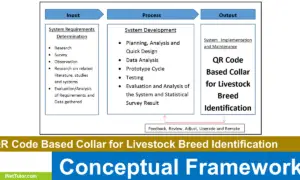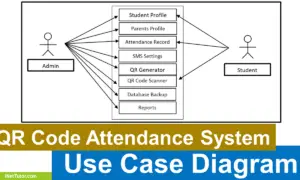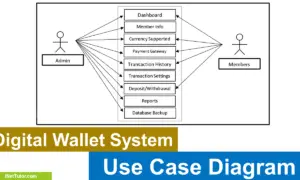Student Performance Tracking Conceptual Framework
This article will show you how to create a conceptual framework for the capstone project titled Student Performance Tracking and Monitoring System. The input, process, output (IPO) model was used to create the conceptual foundation for this investigation.
About the Project
Table of Contents
Tracking and monitoring student’s performance serves a vital role in providing information that is used to assist students, teachers, administrators, and policymakers in making decisions that will further improve the academic performance of students. In the traditional way, the teachers and school administrators collect academic records of students and extract information from them to assess the students’ performance. The manual tracking and monitoring take time and may encounter human errors resulting in obtaining incorrect information that will affect the decisions made. The changing factors in education have led to the quest on how to effectively and efficiently monitor student performance in educational institutions.
The capstone project entitled “Student Academic Performance Tracking and Monitoring System” allows academic institutions to monitor and gather data about the academic performance of students where decisions are derived to further improve the students’ learning outcomes.
Objectives of the Study
- To develop a system that helps academic institutions arrived at decisions to improve students’ academic performance.
- The system will be responsible for tracking and monitoring academic performance.
- The system will produce accurate and reliable information.
- The system will let monitoring of academic performance hassle-free.
What is a Conceptual Framework?
A conceptual framework for a student performance tracking and monitoring system should outline the key components and goals of the system, as well as the underlying theories and principles that guide its design and implementation.
Some key components of a student performance tracking and monitoring system might include data collection and management tools, analytics and reporting capabilities, and feedback and support mechanisms. The system’s goals might include improving student outcomes, increasing student engagement and motivation, and providing data-driven insights to inform decision-making.
A solid foundation of educational ideas and research should serve as the conceptual framework for a student performance tracking and monitoring system. The system may, for instance, be based on theories of motivation and learning or on studies of the elements that influence academic achievement.
Conceptual Framework Diagram
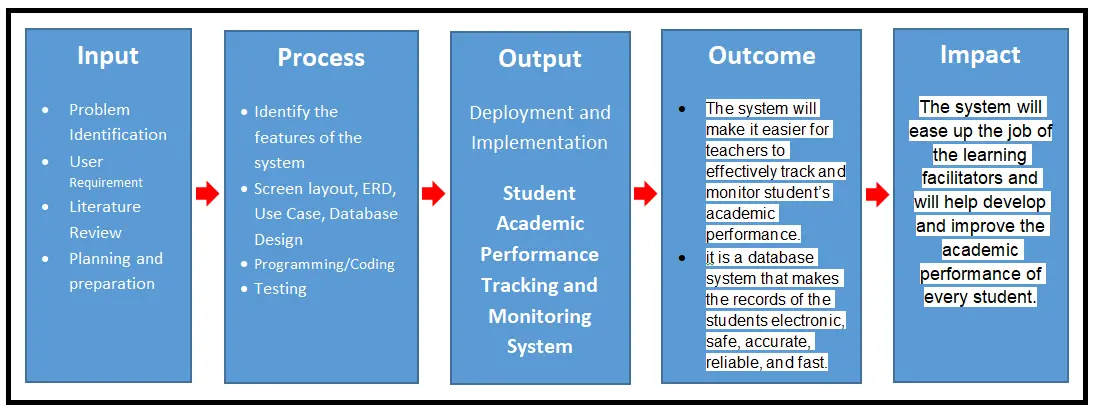
IPO Model Conceptual Framework of Student Performance Tracking and Monitoring System
The study is guided based on the Logic Model Approach to design, develop, implement and basis for identifying and measuring the impact of the utilization of Student Academic Performance Tracking and Monitoring System.
Input
Problem Identification – the respondents of this study will be different schools. Schools are still using manual approaches to track and monitor academic performances of students which is not highly ideal.
User Requirement – this is the part where the researchers have gathered information on the specific features of the system. It is very important to consider their ideas since they will be the one to use the Student Academic Performance Tracking and Monitoring System.
Literature Review – the researchers have conducted researches and studies that are closely related to the proposed system. This process will help the researchers in the development of the project or system.
Planning and Preparation – this is the part where the researchers will prepare the timeline and scheduled of activities for the entire project.
Process
Identify the features of the system – this stage of the process cycle is where the researchers enumerate the list of features to be included in the system based on the specified requirements needed by the end-users.
Screen layout – the researchers created a wireframe for every feature and form design as well. User Interface of the project is the output for this part.
ERD – entity relationship diagram represents the structural data model of the project.
Database Design – the ERD will be converted into the actual database that will be used in the project, in this case the erd will be converted into a sql database.
Use Case – the researchers also prepare a diagram on what are the features the users can access.
Programming/Coding – this is the project comes into life; the project will be developed in PHP, MySQL and Bootstrap.
Testing – the project needs to be tested before it will be implemented with live data and information.
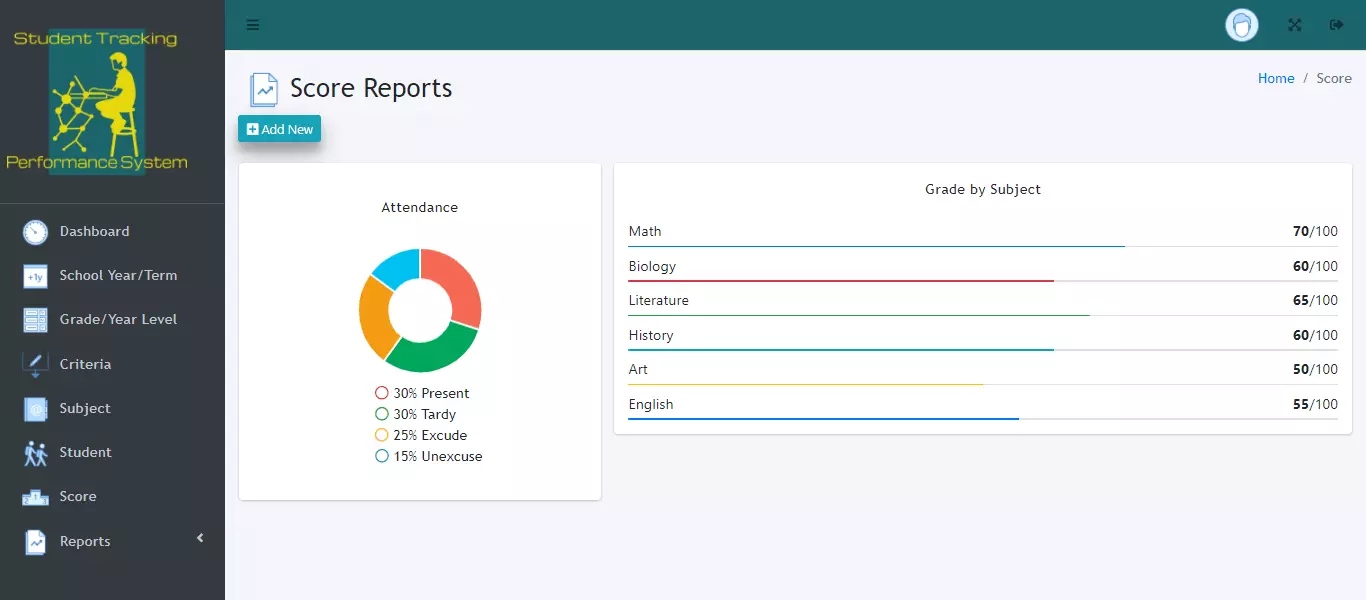
Output
Deployment and Implementation of Student Academic Performance Tracking and Monitoring System – The implementation is designed to be parallel, which means that the current manual approach will continue to be used while the system is operational. The parallel technique compares the results of the manual to the results of the database system. The manual procedure will eventually be phased out, and the system will be fully implemented.
Outcome
- The system will make it easier for teachers to effectively track and monitor student’s academic performance.
- It is a database system that makes the records of the students electronic, safe, accurate, reliable, and fast.
Impact
The system will ease up the job of the learning facilitators and will help develop and improve the academic performance of every student.
Systems for tracking and monitoring student performance are created to keep track on their academic development. These systems may affect students, instructors, and schools in a variety of ways.
On a student level, performance tracking and monitoring systems can provide individualized feedback and support, helping students to identify strengths and areas for improvement. These systems can also motivate students to work harder and set goals for themselves.
For teachers, these systems can provide valuable data and insights into the performance of their students, allowing them to tailor their teaching methods and identify areas where additional support may be needed.
At the school level, performance tracking and monitoring systems can help to identify trends and patterns in student performance, which can inform decision-making and resource allocation. These systems can also be used to measure the effectiveness of various teaching methods and interventions.
Summary
The capstone project entitled “Student Academic Performance Tracking and Monitoring System” allows academic institutions to monitor and gather data about the academic performance of students where decisions are derived to further improve the students’ learning outcomes. This article focused on the development of the study’s conceptual framework. The researchers used the input, output, process; (IPO) model plus they also defined the outcome and the impact of the project. The input phase is consisting of Problem Identification, User Requirement, Literature Review and Planning and preparation. The process phase involves steps such as identifying the features of the system, Screen layout, ERD, Use Case, Database Design, Programming/Coding and Testing of the program. After the development the project will be then deployed and implemented. As stated in the conceptual framework the study will have 2 possible outcomes such as the system will make it easier for teachers to effectively track and monitor student’s academic performance and it is a database system that makes the records of the students electronic, safe, accurate, reliable, and fast. Overall, the system will allow educational institutions to track and monitor academic performance of students.
Readers are also interested in:
Student Tracking Performance Database Design
Student Academic Performance Tracking and Monitoring System
Document Tracking System Free Download
You may visit our Facebook page for more information, inquiries, and comments. Please subscribe also to our YouTube Channel to receive free capstone projects resources and computer programming tutorials.
Hire our team to do the project.
